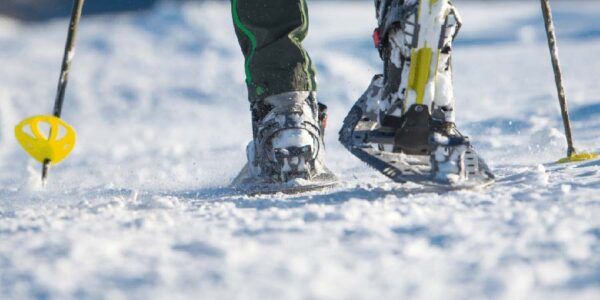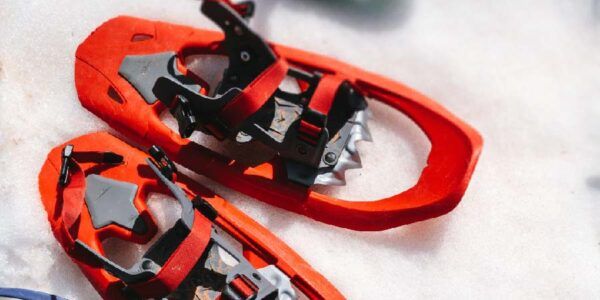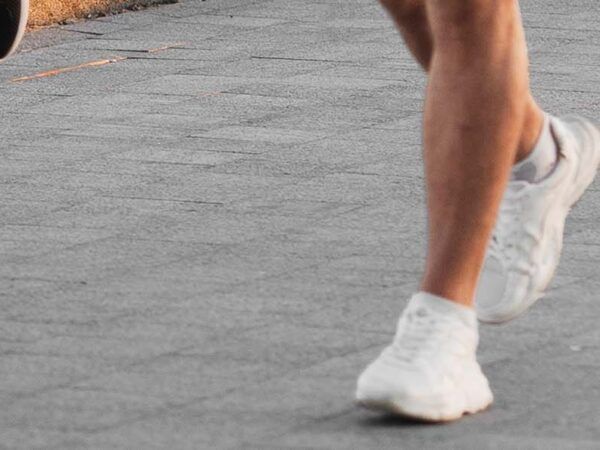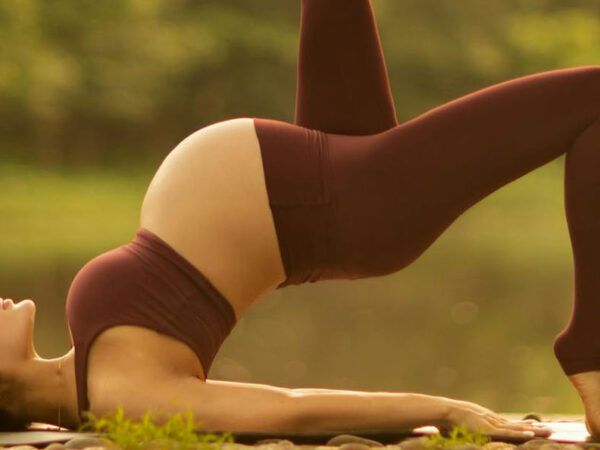What is snowshoeing exercice?
What you need to go snowshoeing
Here are some of the basic items you will need for an outing on snowshoes
Use snowshoes that are the right size
The size of the snowshoes depends on your weight. The type of terrain and the snow conditions may also influence the type of snowshoes to use.
Wear warm, waterproof boots
Because of the contact of your boots and snowshoes with the ground, your feet are the most likely part of your body that may get wet and cold if they are not properly protected. Use wool or synthetic socks that can wick sweat.
Dress in layers with clothing that can sufficiently tolerate cold and wet conditions
Wearing layers of clothing allows you to adjust your needs according to the activity level or the temperature. Avoid cotton clothing as it can get wet and cause you to become cold. Wool or synthetic materials work better to wick away moisture and retain heat. Try to have a lightweight base layer of clothing, a mid-layer jacket and an outer layer that is waterproof and provides added ventilation.
Don’t forget additional protection
A wool or synthetic hat, headband and baklava will prevent heat loss from the head and protect you from sunburn. Sunglasses and sunscreen are useful as UV light is more intense when reflected off the snow.
Bring adjustable walking poles
Poles can be helpful to maintain balance when snowshoeing over uneven terrains

Snowshoeing techniques on flat terrain
Snowshoeing on a flat terrain is like regular walking. Your stride should be wider than it is for walking to avoid stepping on the insides of your snowshoe frames. Because of this difference, you may find your hips and groin muscles aching a bit after the first few times out. If you are going uphill, use your toe or instep crampons for traction.
Always place your feet firmly on snow. If you have poles, you should place them in front of you. If you are going downhill, keep your knees bent and relaxed, and place your body weight slightly back. Walk smoothly and plant your heel first when you walk. If you have poles, keep them poles planted in front of you.
How to warm up warm-up for snowshoeing?
A proper warm-up is done at the very beginning of your activity. A short period of low intensity exercises is performed for about ten minutes. The goal is to prepare your body for the physical activity that will follow. This involves gradually increasing the temperature of your muscles and joints, your blood pressure, and your heart rate.
An example of an adequate warm-up before snowshoeing would include:
- Start walking or marching on the spot at a slow pace.
- Incorporate hip mobility exercises such as toes touches and lateral lunges.
- Shoulder and trunk mobility exercises such as large arm circles can also be indicated. If you have poles, they can be useful to some of these movements
At the end of the warm-up, you should feel that the temperature of the body is warmer (increased circulation) and that there is a slight shortness of breath (increased respiration).

How to progress the intensity of your snowshoeing activity?
Any variety of physical exertion will cause different types of forces to be applied to structural parts of the body such as the muscles, tendons, ligaments, and bones of the body. The body will adapt to the amount of load that is applied to these tissues. The amount of load from snowshoeing can be affected by such factors as the total amount of time exercising, the intensity and speed of the exercise performed, and the type of trails that are used.
When you increase the load of your training too quickly, your body has difficulty adapting and the risk of injury increases. To ensure proper progress, attempt to modify one factor from one workout to the next. For example, you can repeat the same trail but increase your walking speed. Inversely, you can maintain the same speed and choose a longer trail or a more uneven terrain.
What to do in case of injury?
Most injuries from snowshoeing are a result of increasing your physical activity levels too rapidly. If you feel pain after snowshoeing and have not had any trauma, it is likely that you have increased your activities levels too quickly or that your biomechanics are not adequate. Muscles and tendons may have been overexerted or joints may have been irritated by incorrect repetitive movements.
In this case, consult a physiotherapist to have an assessment of your muscles and joints. Once the problem is identified and understood, they will be able to help ease the pain, correct the root cause of the problem and help you regain the mobility, strength, and flexibility to return safely to your snowshoeing activities.




